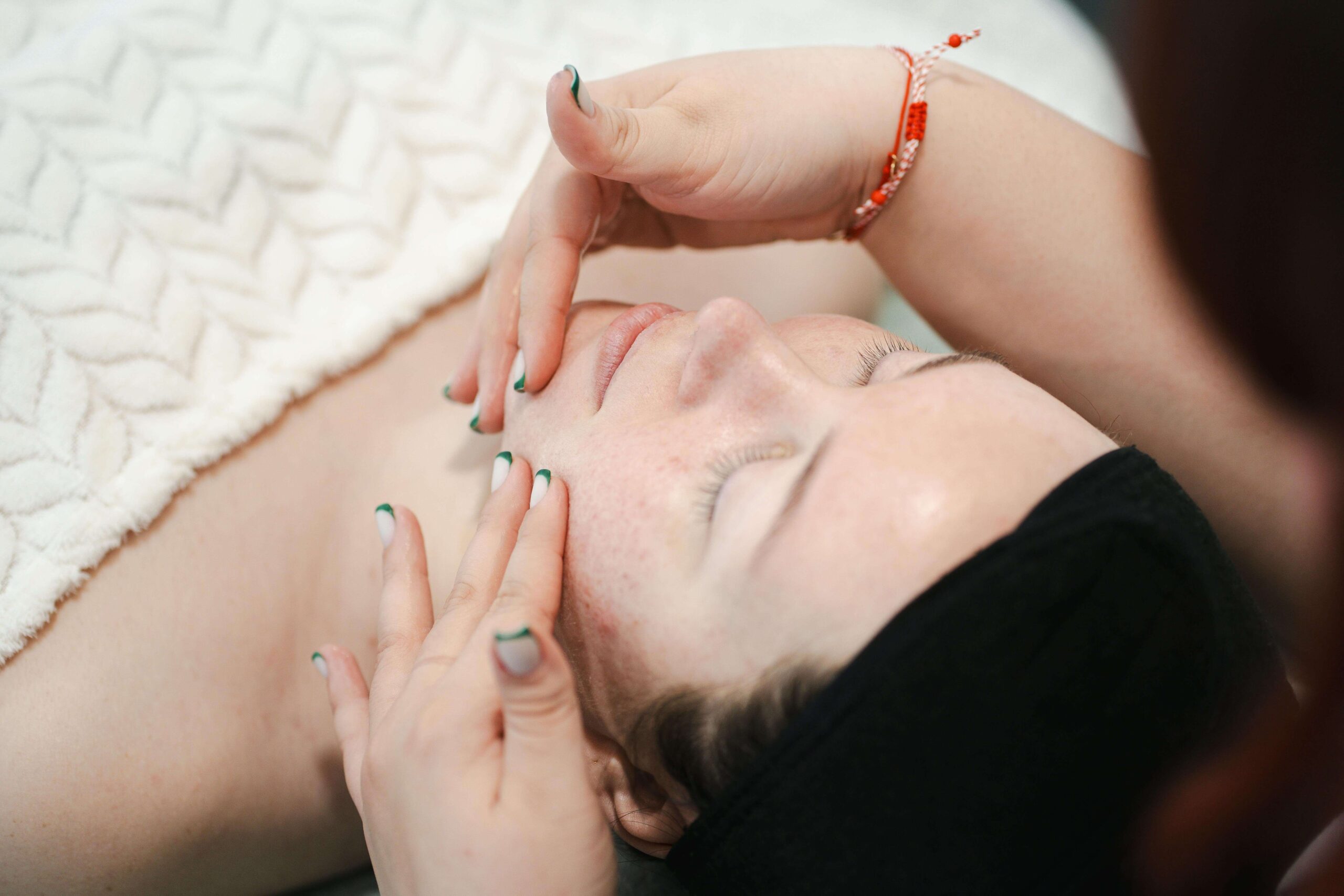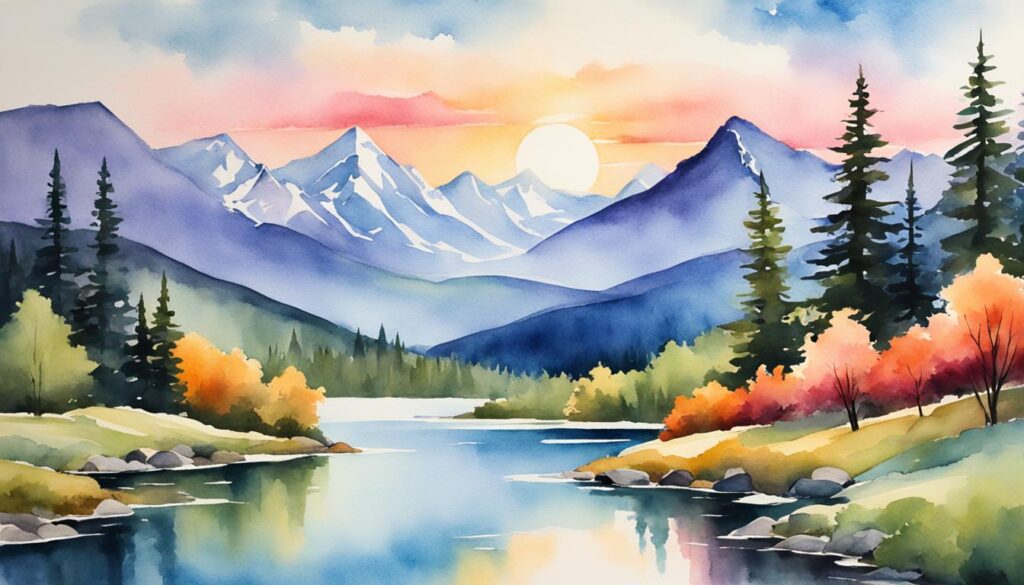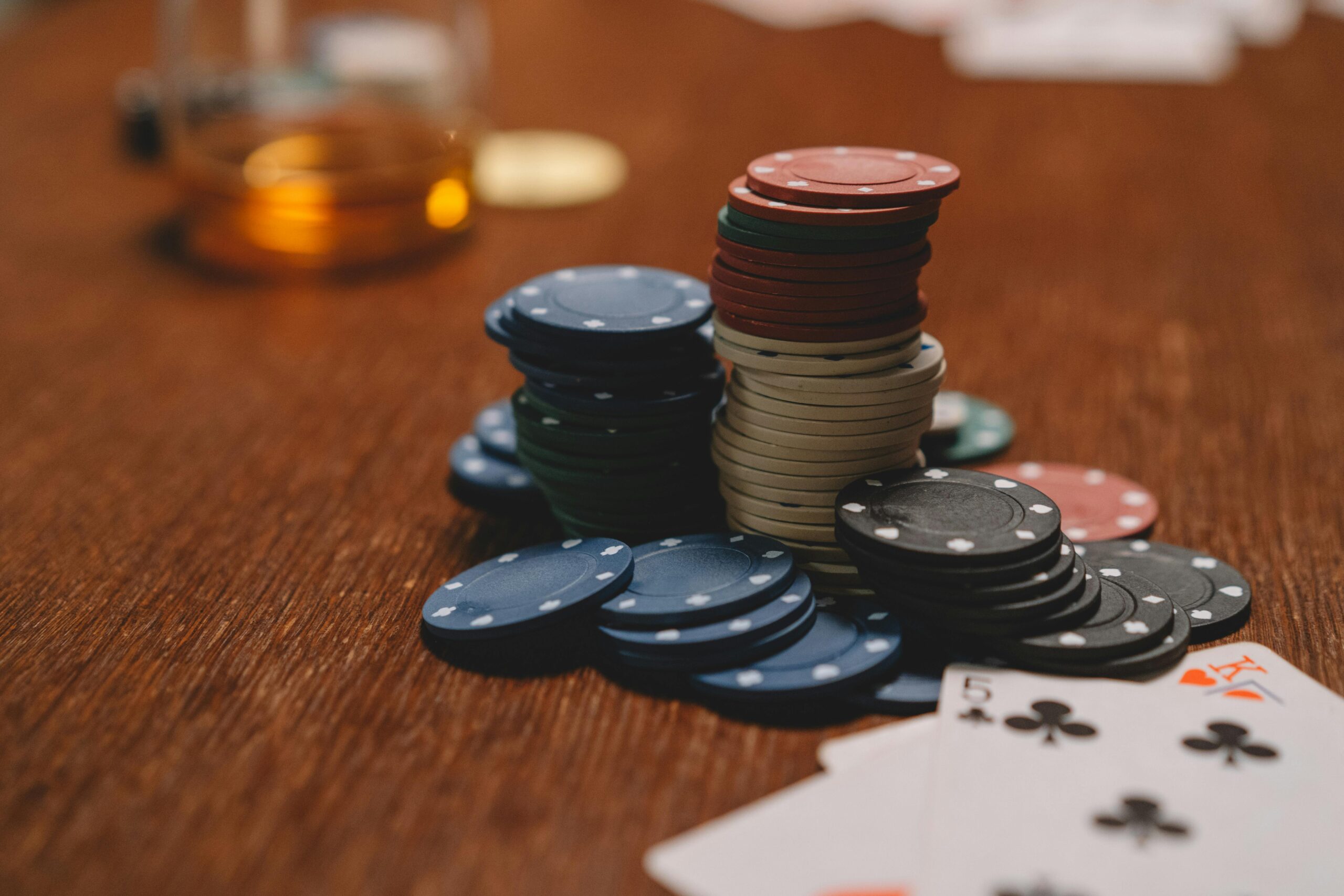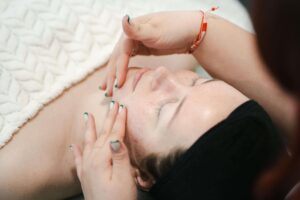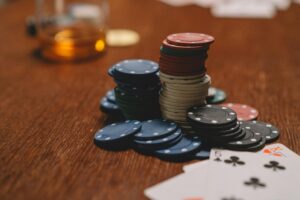Explore the world of watercolor landscape painting with this guide. It’s perfect for beginners or those looking to improve. You’ll learn to bring nature’s beauty to your artwork.
Learn key watercolor techniques and how to make beautiful landscapes. This guide will give you the skills and confidence to paint stunning scenes. You’ll get step-by-step instructions, expert tips, and advice from workshops.
Unleash your creativity and start your watercolor journey. Let’s dive into the beauty of nature with watercolor.
Table of Contents
ToggleKey Takeaways
- Discover the fundamentals of watercolor landscape painting
- Learn essential techniques for capturing the beauty of nature
- Explore step-by-step tutorials and expert demonstrations
- Develop your landscape composition skills
- Capture atmospheric effects with watercolor
- Choose the right watercolor supplies for your painting journey
- Avoid common mistakes in watercolor landscape painting
Watercolor Landscape Tutorials: An Introduction
Step into the world of watercolor landscape tutorials and start your journey to bring nature’s beauty to paper. Watercolor is perfect for capturing the outdoors with its flowing and expressive qualities. It’s the ideal medium for landscape painting tutorials.
Exploring the Beauty of Nature through Watercolor
Watercolor landscapes have a special charm that artists and art lovers find captivating. They offer a unique way to express the beauty of nature. With watercolor, you can learn to make scenes that are full of life and emotion.
Why Landscape Painting Matters
Landscape painting is more than just a skill. It’s a way to connect with and appreciate nature. Through watercolor landscape tutorials, you’ll see how it can deepen your love and respect for the world around us.
“Watercolor landscape painting allows us to pause, observe, and translate the beauty of the world around us onto the canvas, creating a tangible link between the artist and the landscape.”
Let’s dive into the world of watercolor landscape tutorials together. We’ll discover how to capture nature’s essence with this amazing medium.
Essential Watercolor Painting Techniques
Learning the key watercolor painting techniques is vital for making beautiful landscapes. We’ll look at the main brushwork, color mixing, and wet-on-wet and dry-on-dry methods. These skills will help you show your artistic vision in watercolor art lessons.
Brushwork is a crucial skill. Watercolor brushes vary in shape and size, each for a specific task. Knowing how to use the brush, from soft washes to strong strokes, makes your landscapes lively and full of emotion.
Color mixing is also key in watercolor painting. Trying out different colors and seeing how they mix on the paper lets you create a deep, balanced palette. Getting good at blending and glazing colors adds depth and mood to your landscapes.
Wet-on-wet and dry-on-dry techniques are core to watercolor. Painting on a wet surface (wet-on-wet) gives soft, natural edges and blends. On a dry surface (dry-on-dry), you get sharp lines and shapes. Using both techniques lets you layer and texture your watercolor landscapes.
By practicing these watercolor painting techniques, you’ll get the skills to make your watercolor art lessons come alive. With a strong base in brushwork, color mixing, and wet-on-wet and dry-on-dry, you’re set to create beautiful watercolor landscapes.
Mastering Landscape Compositions
Crafting beautiful watercolor landscapes means knowing about composition. At the core is the rule of thirds, a classic idea that makes your paintings stand out. By placing important parts along the lines of this grid, you guide the viewer’s eye. This creates balance and harmony in your scenes.
Understanding the Rule of Thirds
The rule of thirds divides your canvas into nine parts with two lines each. These lines cross at points that are perfect for placing key elements. Learning this rule helps make your compositions dynamic and emotionally powerful.
Creating Depth and Perspective
Good compositions use the rule of thirds and depth for a 3D effect. Techniques like overlapping objects and varying scales add distance and depth. Mastering these skills makes your landscapes come alive, pulling the viewer into the scene.
To make your watercolor landscapes stand out, keep practicing and refining your skills. Understanding the rule of thirds and depth techniques will take your painting tutorials to the next level. You’ll capture nature’s beauty in a captivating way.
Capturing Atmospheric Effects with Watercolors
Watercolor painting is great for showing the changing sky and atmosphere. You’ll learn how to make your watercolor landscape scenes come alive. This includes painting realistic and expressive skies, clouds, and other elements.
Painting Skies and Clouds
Painting the sky and clouds is key to making beautiful watercolor landscape demonstrations. Start by understanding cloud types and how they react to light. Use wet-on-wet for soft skies or dry brushing for clear clouds. Layering colors and playing with watercolor transparency can show the sky’s depth and movement.
“Painting the sky is not just about color – it’s about capturing the ever-changing mood and atmosphere of the landscape.”
Mastering watercolor landscape masterclasses means learning about atmospheric effects like mist and fog. These add depth and mood to your paintings. Try wet-on-wet, dry-brushing, and glazing to get the look you want.
| Technique | Effect | Example |
|---|---|---|
| Wet-on-wet | Soft, hazy skies and clouds | |
| Dry-brushing | Sharper, more defined cloud formations | 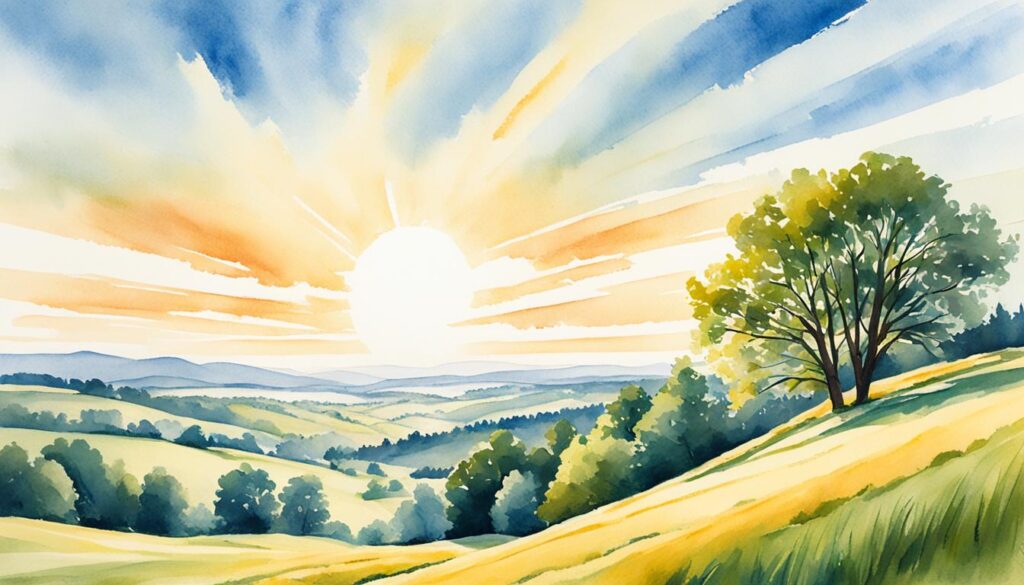 |
| Glazing | Atmospheric effects like mist and fog |
With these techniques, you can make watercolor landscape scenes that feel real and full of atmosphere. They’ll take the viewer right into the natural world.
Watercolor Landscape Scenes: Step-by-Step Tutorials
Unleash your inner artist and learn to paint stunning watercolor landscape scenes with our step-by-step tutorials. These lessons are perfect for both beginners and experienced painters. They will guide you in capturing nature’s beauty with watercolor.
Explore a world of vibrant colors and fluid brushstrokes. Learn to paint various outdoor landscapes, like serene lakeshores and majestic mountain vistas. Our expert instructors will guide you through the painting process. They’ll share valuable insights and techniques for beautiful watercolor landscape results.
Painting a Tranquil Lake Scene
Start your watercolor art lessons with a tranquil lake scene. Learn the secrets to capture the water’s reflective qualities, the sky’s soft hues, and the lush foliage. You’ll get step-by-step guidance on layering colors, creating depth, and mastering wet-on-wet techniques.
- Sketch the lake, shore, and trees first.
- Mix blues to capture the water and sky’s tones.
- Use wet-on-wet to create tree reflections in the lake.
- Add details like rocks, grasses, and natural elements to the shoreline.
- Refine your painting with final touches and highlights.
Immerse yourself in nature’s beauty with these watercolor landscape tutorials. Discover the joy of painting the outdoors, one brushstroke at a time.
Painting Watercolor Landscape Demonstrations
Learn the secrets of watercolor landscape painting with live demonstrations and masterclasses. These are led by skilled artists. They will show you how to bring beautiful scenes to life on canvas.
Livestream Workshops and Masterclasses
Don’t miss our exciting watercolor landscape demonstrations and watercolor landscape masterclasses. They will boost your skills and spark your creativity. You’ll get to watch experts paint live and ask them questions.
These sessions are perfect for beginners or those looking to improve. They offer the help and inspiration you need to master watercolor landscapes.
| Upcoming Watercolor Landscape Demonstrations | Duration | Instructor |
|---|---|---|
| Capturing the Essence of a Misty Forest | 2 hours | Jane Doe |
| Painting a Vibrant Coastal Landscape | 3 hours | John Smith |
| Mastering the Art of Atmospheric Skies | 1.5 hours | Emily Johnson |
“These live watercolor landscape demonstrations have been a game-changer for my painting journey. I’ve learned so much from observing the artists’ techniques and asking questions in real-time. It’s truly an invaluable experience.”
Watercolor Landscape Tutorials: Video Guides
Discover the beauty of nature with our watercolor landscape video tutorials. They’re perfect for beginners or experienced artists. These guides offer a deep dive into the art of watercolor landscapes.
Our tutorials include step-by-step demos and in-depth masterclasses. They cover various techniques to help you improve your art. Dive into the world of watercolor landscape video guides and boost your creativity.
Beginner-Friendly Watercolor Landscape Tutorials
- Learn the basics of watercolor landscapes, like color theory and brush handling.
- Discover how to paint nature scenes, from forests to lakes, with our beginner tutorials.
- Learn to create atmospheric effects, like misty mornings and dramatic skies, to add depth to your art.
Advanced Watercolor Landscape Techniques
- Explore complex compositions and learn how to create depth and perspective in your landscapes.
- Improve your skills with advanced techniques like glazing and dry brushing for realism.
- Join our workshops and masterclasses to learn from expert artists in real-time.
Explore the world of watercolor landscape video guides and express yourself artistically. These tutorials are great for beginners and pros alike. They’ll help you capture nature’s beauty with confidence.
“Painting is the most magical of mediums. The transcendent power of the click of the brush, the warp and woof of the paint on the canvas is beyond describing.”
– Property Owen.
Choosing the Right Watercolor Paints and Brushes
Learning watercolor landscape painting begins with picking the right materials. The paints and brushes you use can greatly affect your art. We’ll show you how to pick the best watercolor supplies for beginners. This will help you create beautiful landscapes.
Essential Watercolor Supplies for Beginners
Choosing the right supplies is key in watercolor painting. Beginners should start with a few important items. Here’s what you need to get started:
- Watercolor Paints – Get a set of high-quality, artist-grade paints with lots of colors. Winsor & Newton, Daniel Smith, and Sennelier are great choices.
- Watercolor Brushes – Get different brush sizes and shapes, like round, flat, and angular. Natural hair brushes, such as sable or kolinsky, work best for color and feel.
- Watercolor Paper – Choose paper with a cold-pressed or rough texture. Arches, Strathmore, and Canson make great watercolor paper.
- Water Container – You need a strong, spill-proof container for mixing paints and cleaning brushes.
- Palette – A palette with mixing wells lets you blend paints easily for consistent colors.
With these basic supplies, you’re ready to learn watercolor painting techniques and watercolor landscape tutorials. This guide will help you master watercolor.
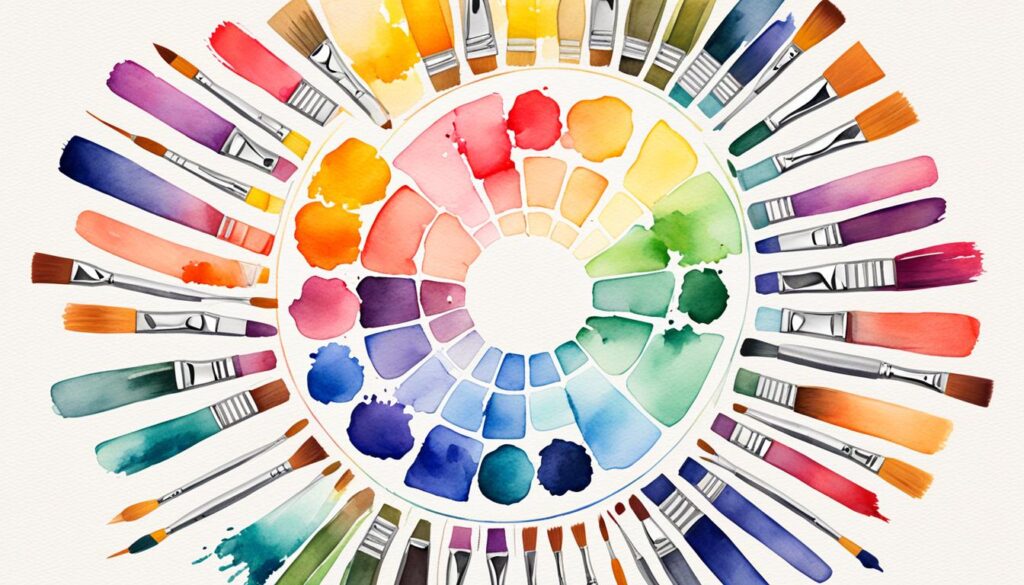
| Watercolor Paint Brand | Pigment Quality | Color Range | Price Range |
|---|---|---|---|
| Winsor & Newton | Excellent | Extensive | $$$ |
| Daniel Smith | Exceptional | Vast | $$$ |
| Sennelier | Premium | Diverse | $$ |
| M. Graham | High-Quality | Varied | $$ |
Quality watercolor art lessons and watercolor landscape tutorials are also key. They help you use your materials well and improve your skills.
Watercolor Landscape Painting: Common Mistakes to Avoid
Painting watercolor landscapes is an art that needs skill, patience, and attention to detail. Even skilled artists can make common mistakes. We’ll look at these mistakes and offer ways to fix them.
One big mistake is not planning the composition well. This can make your painting look bad and unbalanced. To fix this, think about where to put things, use the rule of thirds, and add depth and perspective.
Another issue is using too much water or not controlling it well. Watercolor is tricky because it needs a light touch and you must know how it acts on paper. Too much water makes colors dull, and not enough makes them stiff.
- Lack of planning in the composition
- Overuse or poor control of water
- Failing to capture atmospheric effects
- Struggling with painting skies and clouds
- Neglecting to create depth and perspective
It’s also hard to capture things like hazy skies, soft shadows, and how light and color mix. These skills are key for realistic and deep watercolor landscapes.
Many artists find it tough to paint realistic skies and clouds. These are often the main part of a landscape painting. Getting the right mix of soft edges, tones, and gradients is important.
By fixing these mistakes and using practical tips, you’ll improve your watercolor landscapes. This will show off your artistic skills.
Watercolor Landscape Tutorials for Intermediate Artists
If you’ve learned the basics of watercolor painting and want to improve, this section is for you. You’ll learn advanced techniques and tackle challenging subjects. Join watercolor landscape masterclasses and watercolor landscape workshops to make your art better and explore new ideas.
Advancing Your Watercolor Landscape Skills
As an intermediate artist, you’re ready to try new things. Discover watercolor landscape tutorials that will make you think differently and be more creative. Learn to use negative space and try bold colors to make your style unique.
- Work on complex watercolor landscapes, focusing on balance and visual interest.
- Practice capturing light and atmosphere to add depth and emotion to your art.
- Try mixing watercolor with other mediums for unique artworks.
These watercolor landscape tutorials will improve your skills and help you find your artistic voice. Join watercolor landscape masterclasses and watercolor landscape workshops with famous artists. Meet other artists who share your passion.
“The journey of a thousand miles begins with a single step. Embrace the challenges and enjoy the process of refining your watercolor landscape skills.”
With hard work and a love for trying new things, you’ll improve your watercolor skills. Start this exciting journey and see how amazing your watercolor landscapes can be.
Watercolor Landscape Painting: Finding Inspiration
Capturing nature’s beauty on paper is a captivating journey. It starts with finding the right inspiration. As watercolor landscape artists, we need a keen eye and an open mind. This helps us bring life to our watercolor landscape scenes and watercolor landscape compositions.
Plein-air painting is a great way to find inspiration. It means painting outside, directly from nature. This method helps us improve our skills and connect deeply with the landscape.
Reference photography is also useful for artists. It lets us study the light, shadow, and composition of beautiful scenes. Then, we can bring these elements to life with our brushes and paints.
“Painting from life is the best way to truly capture the essence of a landscape. It forces you to observe the world around you with a fresh perspective and discover the hidden beauty that often goes unnoticed.” – Jane Doe, renowned watercolor artist
Whether painting outdoors or from photos, the key is to stay open to nature. Embrace the unexpected and try new things. Let your creativity flow freely to find new possibilities in your watercolor landscapes.
Start your artistic journey with an open mind and a keen eye. Let nature guide you. With practice and persistence, you’ll create beautiful watercolor landscape scenes and watercolor landscape compositions that capture the outdoors’ essence.
Watercolor Landscape Art: Exhibiting and Selling Your Work
As a watercolor landscape artist, you’ve sharpened your skills and captured nature’s beauty. Now, it’s time to share your art with the world. Exhibiting and selling your work can be rewarding and exciting. It lets you show off your talent and get recognition for your art.
Creating an online presence is key to showcasing your watercolor landscape art. Make a professional website or portfolio to show off your watercolor landscape scenes and watercolor landscape compositions. Use social media to connect with art lovers, share your process, and reach more people.
When showing your watercolor landscape art, look for local galleries, art fairs, and festivals that fit your style. Pick a collection of your best pieces that show your unique style and vision. Be ready to talk about your artistic journey, what inspires you, and the stories behind your watercolor landscape paintings.
| Tips for Exhibiting Watercolor Landscape Art | Tips for Selling Watercolor Landscape Art |
|---|---|
|
|
Selling watercolor landscape art can be thrilling and tough. Set your prices fairly, thinking about your time, materials, and artistic effort. Look into selling prints or giclées to reach more people. Keep promoting your art on social media, email, and by working with other artists.
“Painting is just another way of keeping a diary.” – Pablo Picasso
Embrace the journey of showing and selling your watercolor landscape art. By sharing your talent and connecting with collectors and art fans, you can share your unique vision. You might even get recognition for your art.
Watercolor Landscape Tutorials: Resources and Communities
We’ve put together a list of great resources to help you with your watercolor landscape painting. Check out books on watercolor techniques, visit websites with inspiring art, and join online groups with other artists.
Books, Websites, and Online Groups
For a deeper dive into watercolor landscape painting, look into books like “Painting Watercolor Landscapes” by Wendy Tait and “Atmospheric Watercolor” by Joseph Zbukvic. These books offer detailed instructions and expert insights. They also have lots of visual inspiration to improve your skills.
The internet is full of resources too. Websites like WatercolorPainting.com and ArtistsNetwork.com have tutorials, demos, and galleries. They show the work of skilled watercolor landscape artists. These sites are great for learning and getting creative ideas.
Connecting with artists who like what you do is also key. Join groups like the Watercolor Landscape Painting group on Facebook or the Watercolor Landscape subreddit on Reddit. These groups are great for sharing your art, asking questions, and learning from others who love watercolor landscape art.
FAQ
What is the best way to get started with watercolor landscape painting?
Start by learning the basics of watercolor painting, like how to handle brushes and mix colors. Then, practice painting simple scenes outdoors. As you get better, move on to more complex landscapes.
How can I create depth and perspective in my watercolor landscape paintings?
To add depth and perspective, use the rule of thirds and overlap elements. Also, pick warm and cool colors wisely. These techniques will make your painting look three-dimensional and guide the viewer’s eye.
What are some common mistakes to avoid when painting watercolor landscapes?
Avoid overworking your painting and using too many colors. Don’t forget to plan your composition and let each layer dry before adding more. Knowing these mistakes will help you improve your watercolor landscapes.
How can I find inspiration for my watercolor landscape paintings?
Find inspiration by painting outdoors, using photos, studying other artists, and enjoying nature. Practice often to develop your unique style and vision.
What are the essential watercolor supplies I need to get started with landscape painting?
Beginners need high-quality paints, various brushes, watercolor paper, a palette, and a water container. Using artist-grade materials will give you the best results and make your paintings last longer.
Where can I find watercolor landscape painting tutorials and demonstrations?
Look for watercolor tutorials online, in written guides, during live workshops, and in masterclasses. These resources will help you learn new skills and inspire your paintings.
How can I take my watercolor landscape skills to the next level as an intermediate artist?
Take advanced workshops, masterclasses, and join online communities to improve. These will challenge you to try new things and refine your vision, making your paintings better.
How can I exhibit and sell my watercolor landscape artwork?
Exhibit and sell your art by joining local shows, using the internet, and connecting with galleries. Learn about pricing and marketing to showcase and sell your paintings successfully.
